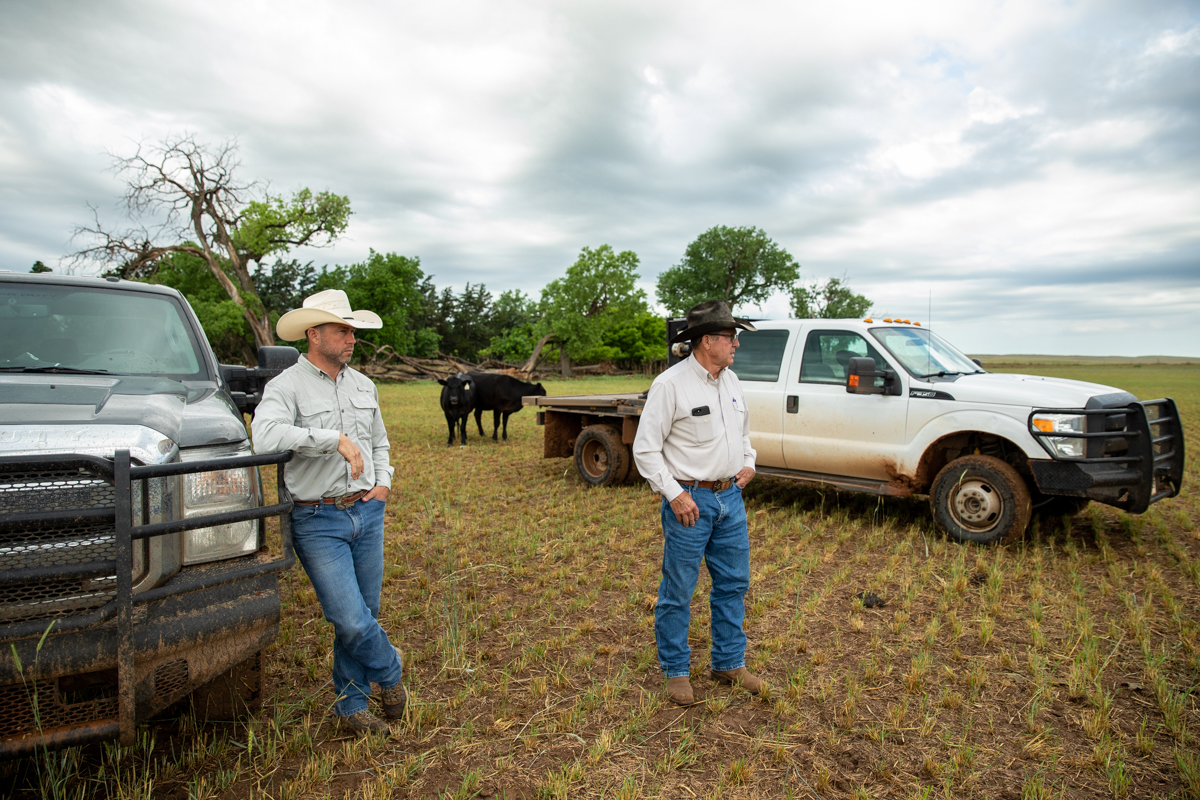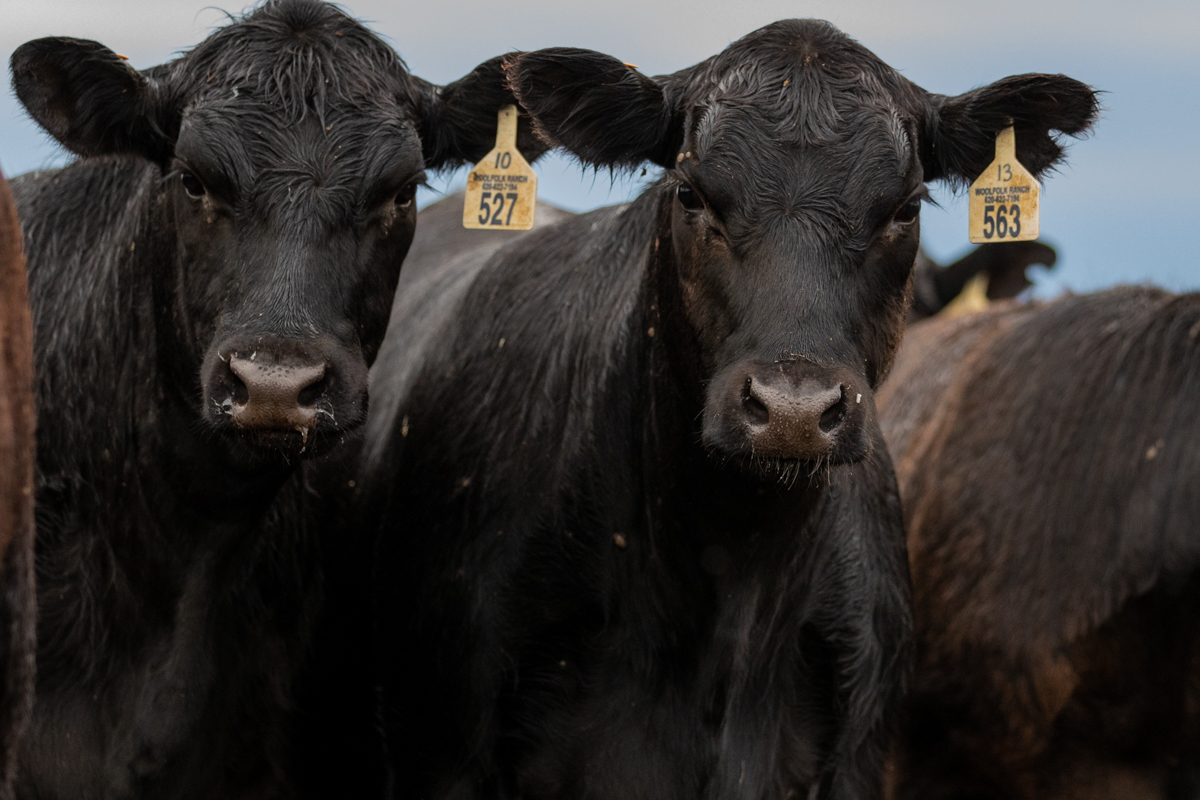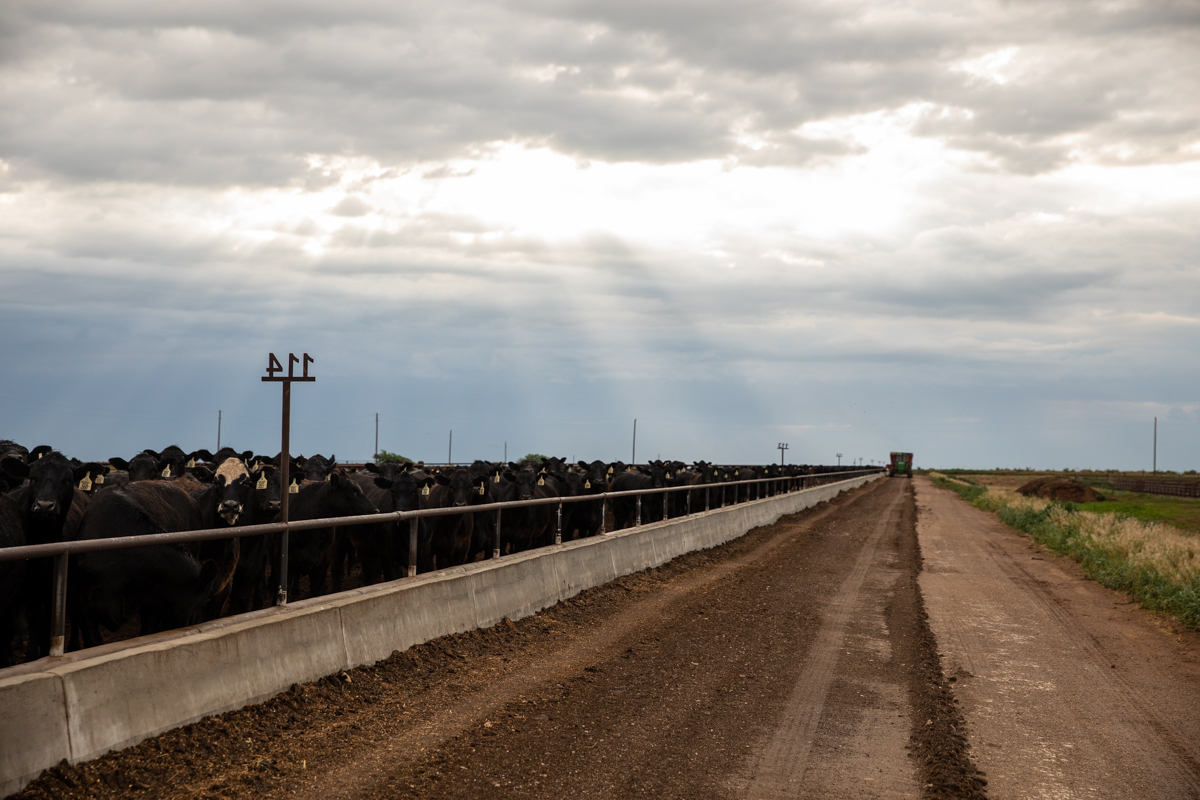
Following the numbers
Woolfolk ranch evolves
Story and photos by Paige Holbrooks
October 2021
It wasn’t in Tyler Woolfolk’s plan to return to the family ranch just outside of Protection, Kan. He spent 12 years forging his own path in the banking industry.
However, his data-driven mindset translated to the commercial cattle business and when the chance to return home came, he took it.
Alongside father Kent and brother Rylan, the three-man team collaborated with experts to grow their ranch on the Kansas-Oklahoma line. Together, they now run 1,000 cow-calf pairs on nearly 20,000 acres and a backgrounding facility used to custom feed calves and develop replacement heifers. That’s in addition to the yearlings they graze out. There’s a lot on the plate for the small family team, but by making the numbers work they’ve learned to balance it all.
Three perspectives, one business
Kent always wanted his sons both home and helping but encouraged the fifth generation on their ranch to pursue new avenues. He wanted to be sure ranch life was truly their desire.
It proved to be valuable advice.
Through Tyler’s finance career, he built relationships and knowledge that drive many decisions today.
“He did a lot of banking horseback,” Kent says. “I’d see him on top of the hill talking on his phone, working,”
“It was a great career, but I am happy to be back ranching full-time,” Tyler adds.
Rylan traded ranch life for the feedyard, learning the ins and outs of a business sector that now serves as a crucial part of their business model. Now he’s back and manages the cattle on grass.
“His feedyard perspective and Tyler’s banking background are a great combination,” Kent says.
The connections and network both brothers made on their journey back to the ranch built a shared philosophy for profit-driven management decisions.


Data Discovery
Diversification proved to be key in evolving the ranch. What began as an Angus-based commercial herd, the trio took signals from the data and sought new avenues for revenue.
After years of buying great bulls and developing the herd, Kent still had a feeling they could do better. In 2014, they experimented with retained ownership on their cattle, hoping to capture the full value of their genetic investments.
“We were getting the cattle right where we wanted and allowing someone else to get the ‘goodie’ or premium out of them,” Kent says.
Marketing the cattle on a grid proved insightful. The numbers showed there was potential for greater profit and areas to improve. They began putting together groups of feeder cattle, some their own, others purchased and backgrounding them before sending to the feedyard. Feeding cattle from varied genetic sources taught them the price of information – the more they know about their stocker cattle, the easier they are to manage and market.
“We use Angus for consistency,” Tyler says. “Not only do we get a more consistent product, but now we’ve got a product that produces a high-quality carcass every time.”
For Woolfolks, it’s not just the breed or the carcass, but data on their females that helped them change course in their herd.
With guidance from their bull supplier, Gardiner Angus Ranch, and veterinarian Randall Spare they started genetic testing replacement heifers. In the beginning, there was a significant difference in maternal traits versus carcass performance – cows had strong mothering ability but lacked in growth and quality.
“We saw that there was an issue and we decided to change a little bit on our bull selection,” Kent says.
They pursued balance, striving to breed a problem-free female that would produce a calf with a high propensity for marbling. Today, it’s working. Conception rates are steady, cows maintain condition and the carcass characteristics are earning premiums on the grid. Recent loads of Woolfolk cattle are grading 44% Prime compared to 9% when they started.



Room for Growth
Genetics only provide potential, and the Woolfolk crew knows management is another crucial piece of performance. Without hired help, they needed a way to provide more for the cattle without creating too much added labor.
In 2015, they built a grow yard. It’s dual-purpose, used for backgrounding calves part of the year and heifer development as the pens empty. Managing the cattle up close and following their performance through the feedyard continues to send signals back on areas for better genetic selection.
After the Starbuck Fire in 2017 that affected a small part of their ranch, they realized the grow yard could also serve as an insurance policy, if they ever need to de-stock the pasture, there’s a place for the cattle.
Always looking around the corner for what’s next, the Woolfolk men have a target: creating more high-quality, profitable cattle. As for how to get there? They’ll continue to follow the numbers.
Originally ran in the Angus Beef Bulletin.
You may also like
You, Your Cows and Their Feed
Expert guidance from Dusty Abney at Cargill Animal Nutrition shares essential strategies for optimizing cattle nutrition during droughts, leading to healthier herds and increased profitability in challenging conditions.
Marketing Feeder Cattle: Begin with the End in Mind
Understanding what constitutes value takes an understanding of beef quality and yield thresholds that result in premiums and/or discounts. Generally, packers look for cattle that will garner a high quality grade and have excellent red meat yield, but realistically very few do both exceptionally well.
Kansas Ranchers Recognized for Sustainability Efforts
Kansas’ Wharton 3C Ranch thrives despite droughts, winning the CAB 2023 Sustainability award. The data-driven, quality-focused approach of first-generation ranchers, Shannon and Rusty Wharton, yields 100% CAB cattle. Their commitment to sustainability and industry collaboration sets a bright future for the cattle business.



